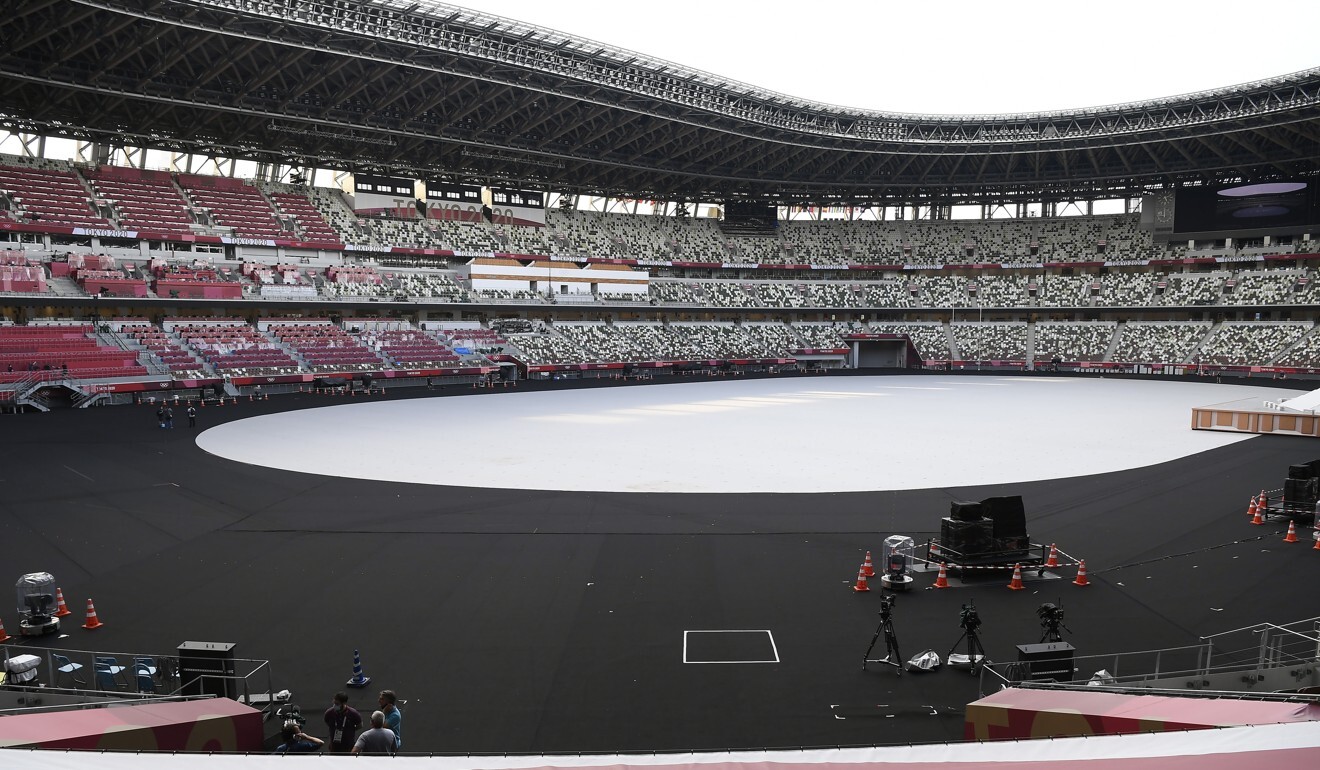
Tokyo 2020 Olympics: will empty stadiums and lack of fans affect athletes?
- Elite athletes do thrive on the excitement whipped up by crowds watching them, so in these pandemic-era Games, how will they feel with no one there?
- Selfie videos, recorded messages and even cardboard cut-outs of spectators may help make up for the lack of a live audience
Former Hong Kong swimming star Karen Lo Cheuk-hang still remembers how she felt when there was no live audience at a local competition she once took part in.
“To be honest, I didn’t mind that, because I am stressed when performing in front of the crowd,” Lo recalled.
Japan had initially expected 7.8 million spectators at the 42 venues hosting events over the 19-day Games, but now the 68,000-seat National Stadium will be empty for both the opening and closing ceremonies and track and field events.
Australian tennis star Nick Kyrgios pulled out of the Olympics, citing the ban on spectators as part of the reason.
“It’s been my dream to represent Australia at the Olympics,” Kyrgios tweeted. “But I also know myself. The thought of playing in front of empty stadiums just doesn’t sit right with me.”
“I sincerely hope the athletes strive to compete at their highest level,” Hashimoto said. “As an athlete I always wanted people to be watching.”
Covid-19 cases among Olympics teams likely ‘tip of the iceberg’: expert
Lo, now a sport psychologist and vice-president of the Hong Kong Society of Sport and Exercise Psychology, said fans’ encouragement could bring excitement and stimulation to athletes, boosting their performance in events such as track and field, basketball and boxing.
Quieter sports such as air pistol, archery and golf would be less affected, Lo believes.
“This is part of the athletes’ mental preparation. They need to know whether they should be more calm or more excited to perform their best. If they cannot find the excitement [without crowds], they need to think how to create the excitement on their own.”

Familiarity and focus
Athletes’ performances change in the presence of others compared to when they perform on their own, with the impact depending on their familiarity with the task, said Sam Sommers, professor and chair at the psychology department at Tufts University in the US.
“[For] a task that someone has practiced very well, the presence of others can actually lead to a narrowing of focus and an ability to actually increase one’s performance.
“Whereas, for those of us engaging in tasks that are difficult and less familiar to us, the presence of others is something that can be distracting and arousing in a bad way that can lead to a decrease in performance,” Sommers said.
‘Taking away joyful part of sport’: athletes brace for fan-free Olympics
The behaviour of spectators is also a factor, according to Lo. “Cheering is a motivation boost. However, some inappropriate behaviours such as verbal aggression may emerge when the athletes are not in their home crowd. These could affect and distract the athletes.”
This is why simulation is part of the psychological training for elite athletes, Lo said. It gives them the opportunity to practice in an environment similar to the competition to minimise uncertainty-induced stress and enable them to deliver their best performances under different conditions. The athletes’ referees and family members and friends are present during the training.
You need not feel alone in these stadiums. Billions of people around the entire globe will be glued to their screens
Sommers pointed out that there is no specific study into elite athletes’ performances with or without spectators, and there are still hundreds of millions of people who will be watching the Olympics on television or online.
“It’s really hard to say. We don’t really know the answer to the question,” he concluded.
“People know that there are still spectators in that virtual sense and perhaps that provides some sense of arousal effects which is still very very high for Olympics competitors.
Cheer maps and fan video walls
After announcing the decision to have closed-door events, the International Olympic Committee (IOC) sent a positive note to athletes, reminding them that over 9,000 hours of the Games would be broadcast.
“You need not feel alone in these stadiums. Billions of people around the entire globe will be glued to their screens, and they will be with you in their hearts,” said Thomas Bach, the president of the IOC.
Games organisers had earlier unveiled two initiatives to allow fans and athletes’ family members to cheer them on from afar. Under the “Share the Passion” project, supported by Alibaba Cloud and Intel, people can submit videos and messages of support through different social media channels. Organisers will then select messages to be screened at competition venues.
Olympic Broadcasting Services (OBS), which is producing live coverage of the Games, will also provide what it calls an online “cheer map” and “fan video wall”, to allow fans to support their countries online and upload selfie videos that might be screened at selected venues.
‘Japanese only’ signs spark anger as Olympics spectator ban hits sponsors
Meanwhile, as sporting events around the world resume without spectators, German soccer league games have taken to using cardboard cut-outs of fans to fill the stands.
“It’s useful,” said former athlete Lo on the use of the cut-outs.
“Although each person has their own preference, as the athletes are already used to having a live audience in the background, it is still useful to replicate the environment for the athletes under such uncertain circumstances.”

